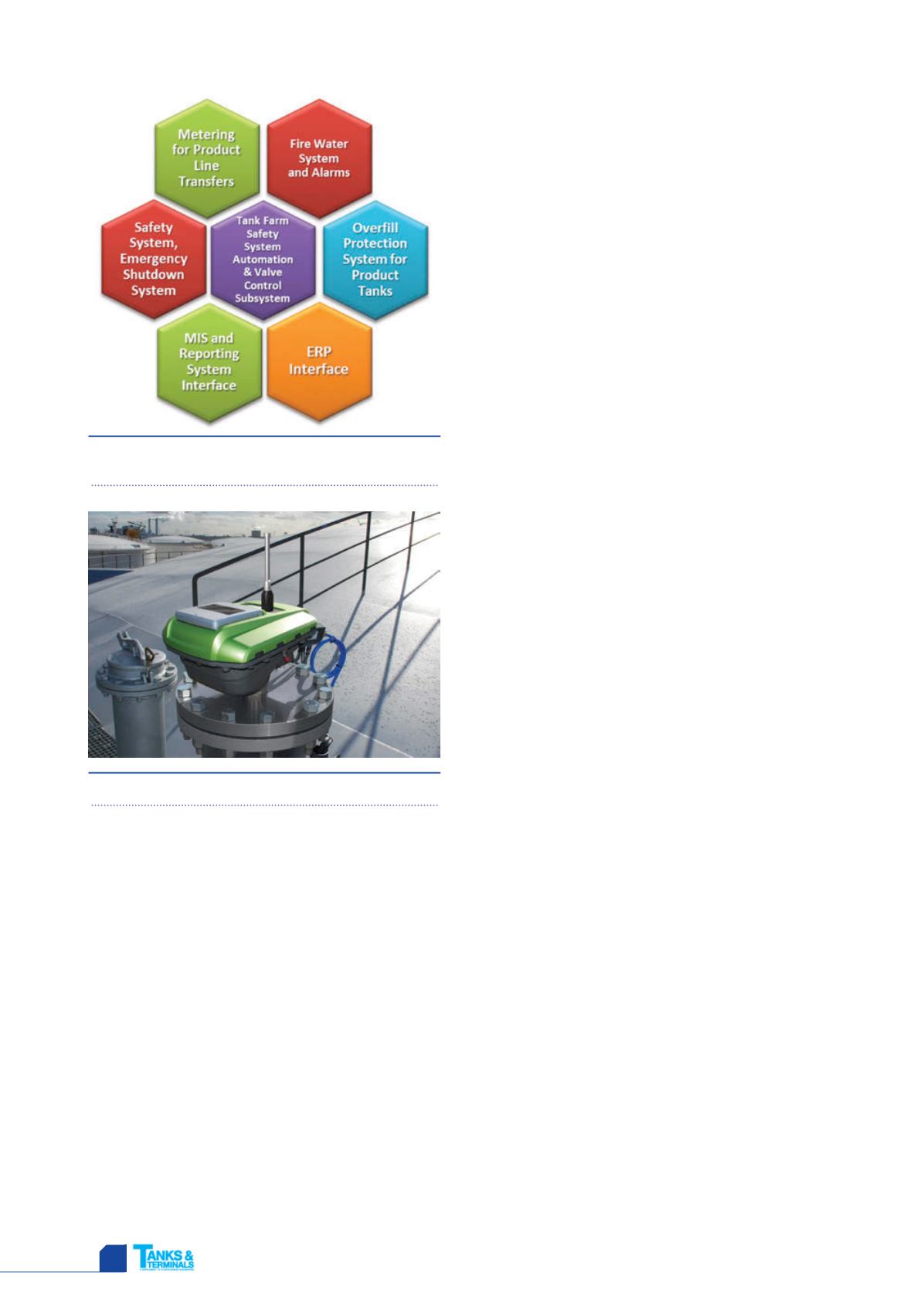
HYDROCARBON
ENGINEERING
72
Over the last 40 years, there have been more than
240 recorded storage tank accidents, with the most frequent
cause being attributed to operational error cite overfilling.
Overfilling a tank with flammable liquid creates the
conditions for an unavoidable fire or explosion and, over the
last decade, there have been increases in fires at
hydrocarbon storage terminals globally.
Recommendations from a team of experts who
investigate these incidents have drawn great attention to
the safety aspects of receipt, storage and distribution of
hydrocarbons. Trade organisations have published guidelines
and standards for the construction, material selection,
design and safe management of storage tanks and their
accessories.
The final report of the major incident investigation board
on the Buncefield UK incident, a major fire caused by a series
of explosions at the Hertfordshire Oil Storage terminal in
December 2005, emphasised the importance of enhanced
safety in end to end operations of sites handling
hydrocarbons. Following this, OISD STD 244, a
comprehensive standard on storage and handling of
petroleum products in depots and terminals, was developed
by India’s Oil Industry Safety Directorate (OISD) and revised
to incorporate new guidelines.
HPCL envisioned a model of excellence that met social
commitment, environment and health and safety norms, so
it decided to implement the recommendations of the
M B Lal Committee. The M B Lal Committee’s
recommendations were based on the Jaipur incident, an
explosion fire at Indian Oil Corporation’s oil depot tank in
October 2009, which killed 12 and caused the evacuation of
500 000 people.
This massive exercise involved enhancements of safety
in existing terminals and depots across India and also
covered new facilities under construction or planning.
The major challenge was to implement the standards in
existing facilities with minimum disruption of operations.
HPCL formed a task force to plan the project for safety
enhancement, under close monitoring of cross-functional
executives.
HPCL’s core project and engineering team engaged in
an intense discussion and consultation with safety experts,
and developed a plan to roll out this project in 63
locations across India. The operations being carried out at
these locations, which involve receipt, storage and
distribution of petroleum products, were identified by
HPCL as areas for improved automation, safety and
operations.
Project scope
In defining the scope of this project, HPCL included an
enhanced emergency shutdown (ESD) system capable of
handling all the operations related to entire terminal safety,
utilising a modular architecture to permit a wide range of
system configurations and facilitating system flexibility and
expandability. It included real time control at the field
instrumentation level, supervisory control, and monitoring of
all safety-related alarms.
The SIL 2 certified radar type automatic tank gauge (ATG)
was considered to be critical within the instrumentation
scope of the project. HPCL’s marketing storage locations
have provision for storing various grades of products,
including motor spirit, superior kerosene oil, high speed
diesel and aviation turbine fuel.
Products are stored in cone roof tanks, floating roof
tanks, underground and above ground horizontal tanks,
based on storage requirements regarding vapourisation and
other conditions.
These locations have efficient terminal operation
systems in place as part of earlier automation projects. A
tank gauging system for inventory measurements and
reconciliation of the products in storage tanks was also part
of an earlier automation system project.
The safety enhancement project included provision of
safety integrity level (SIL) certified radar type ATGs, separate
and independent from the existing tank level gauges on class
‘A’ and class ‘B’ products tanks. The project team
encountered several challenges in deploying level measuring
and overfill protection radar on the tanks, including:
n
Limited availability of suitable mounting
nozzles/stilling wells on the tank top.
Figure 1.
Major operational areas identified by HPCL
for automation, safety and operations.
Figure 2.
Honeywell's SmartRadar FlexLine.


